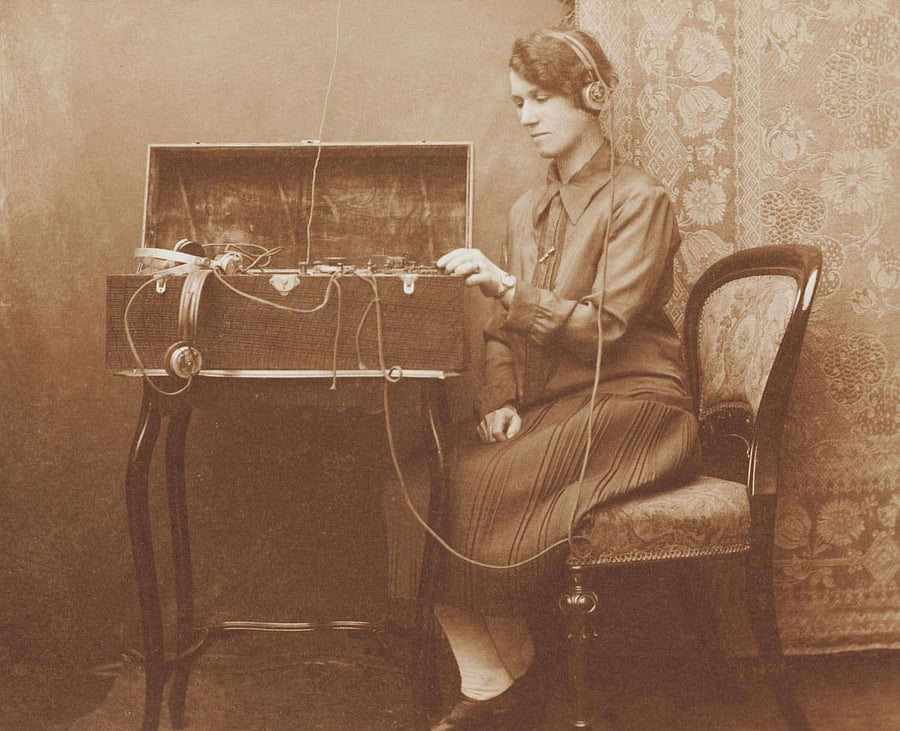
What is the connection between Tipu Sultan, who fought against the British, and a woman executed by the Nazis for being a British spy during the Second World War? Well, Noor Inayat Khan was the great-great-great-granddaughter of the Tiger of Mysore. Noor’s father, Hazrat Inayat Khan, was married to an American. He was a teacher, musician and a progressive Sufi philosopher. Noor spent her growing up years in Paris. The family later escaped to England.
London-based writer-researcher Shrabani Basu’s biography on her, Spy Princess: The Life of Noor Inayat Khan traces how her fervour to help the Allied Forces made her volunteer to work for the British secret service. Her fluency in French was a plus point and she was recruited as a radio operator. In 1943 she was dropped in French soil to work as a wireless radio operator, one of the most dangerous jobs in occupied Europe. Unfortunately, she was detected soon and though she evaded arrest for a few months passing on vital information, she was caught eventually and sent to the infamous Dachau concentration camp where she was tortured and executed. She was only 30. Noor was also decorated posthumously with the George Cross, the highest civilian award in the UK. Thanks to a campaign initiated by Shrabani and a group of like-minded people, Noor’s bust was unveiled at London’s Gordon Square in 2012. Noor also became the first Indian origin woman to be honoured with a memorial Blue Plaque in the UK recently. The Blue Plaque honours notable people and organisations by installing a sign in a public place to commemorate the link between the place and the person.
Victims of conspiracies
Though we are used to images of secret service agents as alpha males, there have been many successful female agents who remained unknown or unrecognised. But some of them were too famous to remain so. A case in point is the legendary Mata Hari, a subject of numerous books and films. Like Noor, she too was caught in wartime imbroglios but during the First World War. Born in Holland in 1876, Margaretha Zelle spent many years in Indonesia, then a Dutch colony, with her husband. After returning to Europe and a divorce, in 1905 she reinvented herself as an exotic dancer from the East — Mata Hari, meaning ‘eye of the day’ in Malay. Immensely popular and moving in high circles, including military officers, she was the ideal recruit for the French counter-espionage bureau during the war years. But she was also recruited by the Germans and became a double agent. Arrested by the French military she was executed in 1917. Some subsequent research on her finds that she was a naïve victim of espionage network conspiracies. Among the films made on her, though fictionalised, the one that stood out was with the recluse actress Greta Garbo (1931). The fact remains that though scores of women helped the Allied Forces during the Second World War spying on the Germans (who too couldn’t see them beyond their gender roles and got easily deceived), they often came against the wall of male attitude of ‘A woman spy? Are you joking?’
An apt platform
Author Sarah Rose narrates in her book D-Day Girls: The Spies Who Armed the Resistance, Sabotaged the Nazis, and Helped Win World War II about British captain Selwyn Jepson who recruited female SOE (Special Operations Executive) surmised that women were psychologically suited for behind-enemy-lines work as they were “secretive, accustomed to isolation, possessed of a ‘cool and lonely courage.’” Women were also considered to be good couriers, itself a high-risk job, because they could rely on basic male attitude towards women, even using ingratiation and seeming naïveté as tools when caught in tight spots.
Memorabilia
At the Spy Museum, Berlin, there are sections with profiles of well-known female secret agents like Dame Stella Rimington who cut her teeth in espionage when her husband was posted in India (1954-59). She took up a job in Delhi to find that her boss was with MI5 (the British espionage arm). She worked up the ladder with her sharp acumen and intelligence and later became the first female Director-General of MI5, a position she held from 1992 to 1996. She was the first DG whose name was publicised on appointment. She has been the inspiration behind the MI5 boss (Judi Dench) in the later versions of the James Bond films with Daniel Craig as 007. Retired, she is a successful author of spy fiction today.
All these are known stories today which prove that in the business of cloak and dagger women are no less competent.